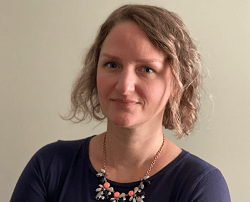How Nonprofits Can Make More Use of Donor-Advised Funds
Kat Roskovics, Partner, Fourlane
Donor-advised funds (DAFs) are a type of brokerage account for charitable contributions. They’re less expensive and more straightforward to set up than other funds. However, you should be aware of some unique aspects when you receive donor-advised funds.
It would be best if you let your wealthier donors know that they can give to your nonprofit and reap numerous special financial breaks – at the same time.
What your donors should know
According to the National Philanthropic Trust’s 2019 DAF Report (https://www.nptrust.org/
DAFs seem to be sending more money toward charities than ever – and the time may be now for your nonprofit to explore DAFs for your donors.
DAFs offer several advantages (https://www.ncfp.org/
• Available in every U.S. state, two territories, and the District of Columbia, DAFs are created and sponsored by 501(c)(3) organizations. They can include community foundations, as well as single-issue and national charities.
Perhaps most importantly, for your purposes, Fidelity, Vanguard, and other brokerage giants (https://www.philanthropy.com/
• Administrative fees can be much less than those of other brokerage accounts. They offer easy setup and, in some cases, no minimum to open an account.
• Note that you can’t use (https://www.cafamerica.org/
DAF organizations also try to tune into what and where donors want to give. Vanguard Charitable has a new online tool, for example, to connect donors with nonprofits that support the geographic areas hit hardest by COVID-19.
Tax advantages of DAFs
DAFs offer donors flexibility in timing and choices for their philanthropic wishes. Still, one of the more objective motivations can be the various tax advantages of giving through these funds rather than directly to charities.
For example, DAFs have become incredibly popular with donors looking to “bunch” multiple years’ donations into one year. This concept of grouping multi-year deductible charitable deductions became popular after 2017. The Tax Cuts and Jobs Act tax significantly raised the standard single-year deduction to $12,400 for individuals and married couples filing separately. DAFs can allow one big donation, topping the year’s standard deduction and improving the donor’s tax situation. The donation is then granted over more than one year, streamlining the charity’s cash flow in troubled times.
Among other tax benefits to donors include the following:
• Assets in the fund appreciate tax-free; interest and capital gains on assets in the fund are not subject to income tax.
• Donors can also contribute appreciated long-term securities, getting a charitable contribution deduction for their fair-market value while reporting no capital gain on the transfer.
• The assets contributed are outside of a wealthy donor’s estate, shielding them from those taxes.
Streamlining the books
Nonprofits certainly have particular issues maintaining a clean set of books, setting up their bookkeeping systems, budgeting, and forecasting cash flow. Accounting for DAFs is one aspect, but there are quite a few other considerations.
Where to begin? We typically start by looking at pain points of reporting. If they are using QuickBooks, an ideal solution for nonprofits, we find that they are doing quite a lot of manual reporting outside of QuickBooks in Excel. As a result, we review a sample of a client’s current reporting to design a better way to get an organization of what they need from QuickBooks without manual manipulation in Excel.
For example, by finding ways to more effectively use the customer/job lists, classes, and the chart of accounts, nonprofits can better track different programs, revenue streams, and direct and indirect grant funds received or expensed. In particular, utilization of the job cost feature can require quite a few changes to an organization’s processes. However, this will give the organization the grant/program reporting they are looking for, especially when those grants or programs run longer than one year or when the grant year isn’t the same as their fiscal year.
Better organization and set up of the various lists available in QuickBooks and redesign of client workflows ultimately lead to better reporting output, giving nonprofits more visibility into where they are and where they are going.
DAFs are here to stay as a tool for nonprofits. Consider a donors’ survey to see if you already have access to this burgeoning potential funding source. You can also track which of your donors are interested in DAFs with a DAF widget (https://dafwidget.com) on your organization’s website.
 About the Author: Kat Roskovics, a partner at Fourlane (https://www.fourlane.com), manages a team of software consultants who assist retail and non-profit clients with software selection and service consults. Contact Kat at kroskovics@fourlane.com.
About the Author: Kat Roskovics, a partner at Fourlane (https://www.fourlane.com), manages a team of software consultants who assist retail and non-profit clients with software selection and service consults. Contact Kat at kroskovics@fourlane.com.

